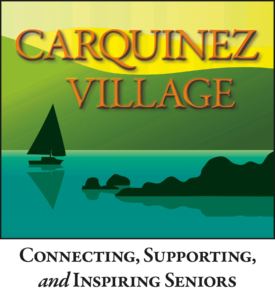By Lois Requist
It’s probably not surprising that the village movement began 17 years ago, started by some women in Boston who realized that as they aged, they needed a support system to make living at home possible, practical, and even joyous.
The senior population is growing at a rate of 10,000 per day in the United States. Many of us are living longer. The questions: where do we live; do we have the tools to live well and comfortably; will the last part of our lives be mostly rewarding or challenging? Will we sometimes wish we were dead?
As I was thinking about this subject, I began to realize that as an older person, I think of myself differently than my mother thought of herself. As it happens, both of our husbands died while we were relatively young: Mother was 49; I was 55. Neither of us remarried.
In Mother’s day, older widowed women frequently lived with one of their children. Mother had five children. As we became adults, my father was gone. She didn’t really want us to leave, and in fact, my younger brother didn’t. Her entire identity was as part of a family.
Mine isn’t. As a young married couple, we moved from Idaho to California. I have children and grandchildren. I love spending time with them, but I also have a life of my own. I’ve travelled extensively. Living in the Bay Area for over 50 years, I have a wide network of friends and acquaintances here and elsewhere. I have my own home, my own lifestyle. No matter how much I enjoy staying with my children, there’s usually a point where I think, well, it’s time to go home now. To live my own life. As it happens, none of my children live nearby.
This story perhaps illustrates that not only has longevity increased, our attitudes about what it means to age have also changed. The nationwide village-to-village network isn’t the only response to these changes, but it is one. Facilities where people can live as they get older have increased in number and in the options they offer. Whole retirement communities have developed, some with everything from completely independent living to assisted living care.
If you haven’t looked into the options, you’d probably be surprised how many there are. With all these changes, there’s a real resistance to leaving home. Sometimes this is based on valid reasoning, other times, it may not be. It can be resistance to change or denial of just how unable a person has become to live independently and take care of themselves.
It can also be a question of affordability. Finding a place to live that meets all our requirements and is financially feasible is not always possible. So, for a variety of reasons, people often stay in their homes. Often this is because they like being in their home with all the memories and attachments.
If while in their home, they’ve developed relationships in the community, that’s another reason they might want to stay. That’s where the village movement comes in—filling in some of the gaps. When a group of women in Boston began a village in 2001, they saw a kind of neighbor helping neighbor situation, with transportation, or light yard or housework. They also realized the difference knowing and sharing experiences with other seniors makes.
So began a movement which now extends across the country. Not surprisingly, there are more villages in California than any other state. Those villages have formed the California Coalition of Villages. Each village is unique, but we learn from each other’s experiences. What has worked or hasn’t.
Life keeps shifting. Our picture of granny in a rocking chair, perhaps feeble, is part of today’s reality, but granny or grandad running marathons is also part of the scene. I find it exciting and hopeful.
Robert Browning was ahead of his time when he said: Grow old along with me! The best is yet to be, the last of life, for which the first was made.”







Thanks for your thoughtful article, Lois! I’m involved with Village Network of Petaluma, and just posted this to our Facebook.